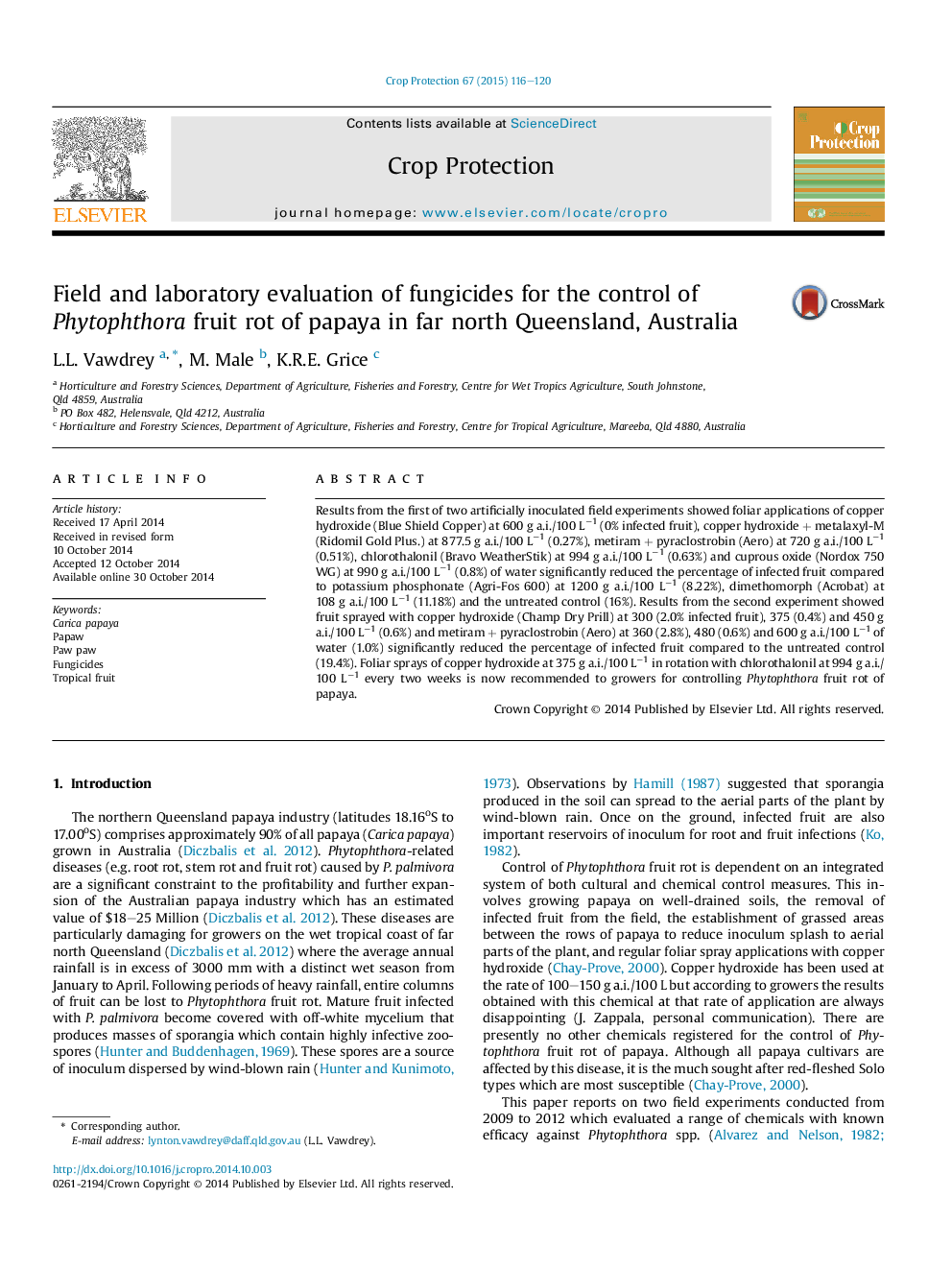| Article ID | Journal | Published Year | Pages | File Type |
|---|---|---|---|---|
| 6373551 | Crop Protection | 2015 | 5 Pages |
â¢Successful field inoculation of papaya fruit with Phytophthora palmivora.â¢Fungicides effectively control Phytophthora fruit rot of papaya.â¢Rotating fungicides is recommended in the control of Phytophthora fruit rot of papaya.
Results from the first of two artificially inoculated field experiments showed foliar applications of copper hydroxide (Blue Shield Copper) at 600 g a.i./100 Lâ1 (0% infected fruit), copper hydroxide + metalaxyl-M (Ridomil Gold Plus.) at 877.5 g a.i./100 Lâ1 (0.27%), metiram + pyraclostrobin (Aero) at 720 g a.i./100 Lâ1 (0.51%), chlorothalonil (Bravo WeatherStik) at 994 g a.i./100 Lâ1 (0.63%) and cuprous oxide (Nordox 750 WG) at 990 g a.i./100 Lâ1 (0.8%) of water significantly reduced the percentage of infected fruit compared to potassium phosphonate (Agri-Fos 600) at 1200 g a.i./100 Lâ1 (8.22%), dimethomorph (Acrobat) at 108 g a.i./100 Lâ1 (11.18%) and the untreated control (16%). Results from the second experiment showed fruit sprayed with copper hydroxide (Champ Dry Prill) at 300 (2.0% infected fruit), 375 (0.4%) and 450 g a.i./100 Lâ1 (0.6%) and metiram + pyraclostrobin (Aero) at 360 (2.8%), 480 (0.6%) and 600 g a.i./100 Lâ1 of water (1.0%) significantly reduced the percentage of infected fruit compared to the untreated control (19.4%). Foliar sprays of copper hydroxide at 375 g a.i./100 Lâ1 in rotation with chlorothalonil at 994 g a.i./100 Lâ1 every two weeks is now recommended to growers for controlling Phytophthora fruit rot of papaya.
